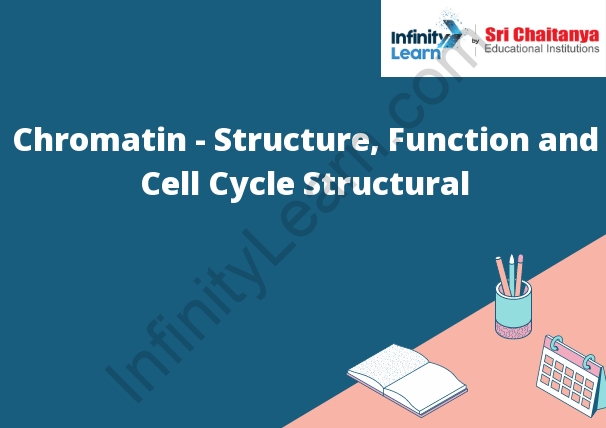Table of Contents
What is Chromatin?
Chromatin is the name given to the complex of DNA and proteins that make up the chromosomes within the nucleus of a eukaryotic cell. The DNA is wound around small proteins called histones to form nucleosomes. These nucleosomes are then stacked on top of each other to form a chromosome. The chromatin is usually in a relaxed state, but can be condensed into a more compact form when the cell needs to divide.

Three Stages of Chromatin Organization
Chromatin is an organized mixture of DNA and proteins that make up chromosomes. It is organized into three stages:
- Euchromatin: This is the open, active form of chromatin. The DNA is easily accessible and the proteins are loosely bound. This allows the DNA to be easily transcribed into RNA.
- Heterochromatin: This is the closed, inactive form of chromatin. The DNA is tightly bound to the proteins and is not easily accessible. This prevents the DNA from being transcribed into RNA.
- Interphase: This is the stage between cell divisions. Chromatin is in the euchromatin stage.
Dynamic Structure
A dynamic structure is one that changes or adapts over time. This can be in response to environmental or external factors, or it can be due to the growth or evolution of the organization itself. A dynamic structure can be beneficial in that it allows the organization to respond quickly to changes in the environment or to new opportunities. However, it can also be a challenge because it can be difficult to maintain a consistent structure and to manage change.
DNA Structure
DNA is a double stranded molecule. The two strands are held together by hydrogen bonds. The strands are twisted around each other to form a helix. The nitrogenous bases of each strand are paired up with each other.
Nucleosomes
are histone octamers that form a basic repeating structure of DNA wrapped around them. The DNA is wound around the histones twice, forming a “30 nm fiber”. Nucleosomes are the fundamental repeating unit of chromatin, the DNA-protein complex that makes up chromosomes. Chromatin is organized into higher order structures by proteins that interact with the histones, such as histone chaperones and histone modifying enzymes.
Cell-Cycle Structural Organization
The cell cycle is a process that cells use to divide and create new cells. The cell cycle has four phases: G1, S, G2, and M.
- G1 is the first phase of the cell cycle. This is when the cell grows and prepares to divide.
- S is the second phase of the cell cycle. This is when the cell actually divides.
- G2 is the third phase of the cell cycle. This is when the cell grows and prepares to divide again.
- M is the fourth phase of the cell cycle. This is when the cell divides again.
Chromatin in Mitosis
Chromatin is the name for the DNA and proteins that make up chromosomes. Chromatin is very tightly packed in interphase, but it becomes less dense and more organized during mitosis. The DNA is uncoiled and the proteins are rearranged into chromosomes.
Chromatin, Chromosome, and Chromatid
- A chromosome is a thread-like structure of DNA and protein that is found in the nucleus of cells. Chromatin is the material that chromosomes are made of.
- Chromosomes are made of chromatin, which is made of DNA and protein.
- Chromatin is the material that chromosomes are made of. Chromosomes are made of chromatin, which is made of DNA and protein. Chromatin is the material that chromosomes are made of. Chromosomes are made of chromatin, which is made of DNA and protein.
Euchromatin and Heterochromatin
- Euchromatin is the name given to the lightly staining regions of the chromosome. These regions are actively transcribing DNA into RNA. Heterochromatin is the name given to the densely staining regions of the chromosome. These regions are not actively transcribing DNA into RNA.
- The nucleus of a eukaryotic cell contains chromosomes that are made up of DNA. The DNA is organized into structures called chromosomes. The chromosomes are divided into two types of structures, euchromatin and heterochromatin.
- Euchromatin is the name for the more active type of DNA. This DNA is condensed and less organized than heterochromatin. Euchromatin is more easily transcribed into RNA and is more active in the cell.
- Heterochromatin is the name for the less active type of DNA. This DNA is more organized and condensed than euchromatin. Heterochromatin is less active in the cell and is not as easily transcribed into RNA.
- The different types of DNA are important for organizing and regulating the gene expression in the cell. The euchromatin is more active and can transcribe more genes, while the heterochromatin is less active and can’t transcribe as many genes. This difference in gene expression is important for organizing the cell and controlling the different activities that occur in the cell.







